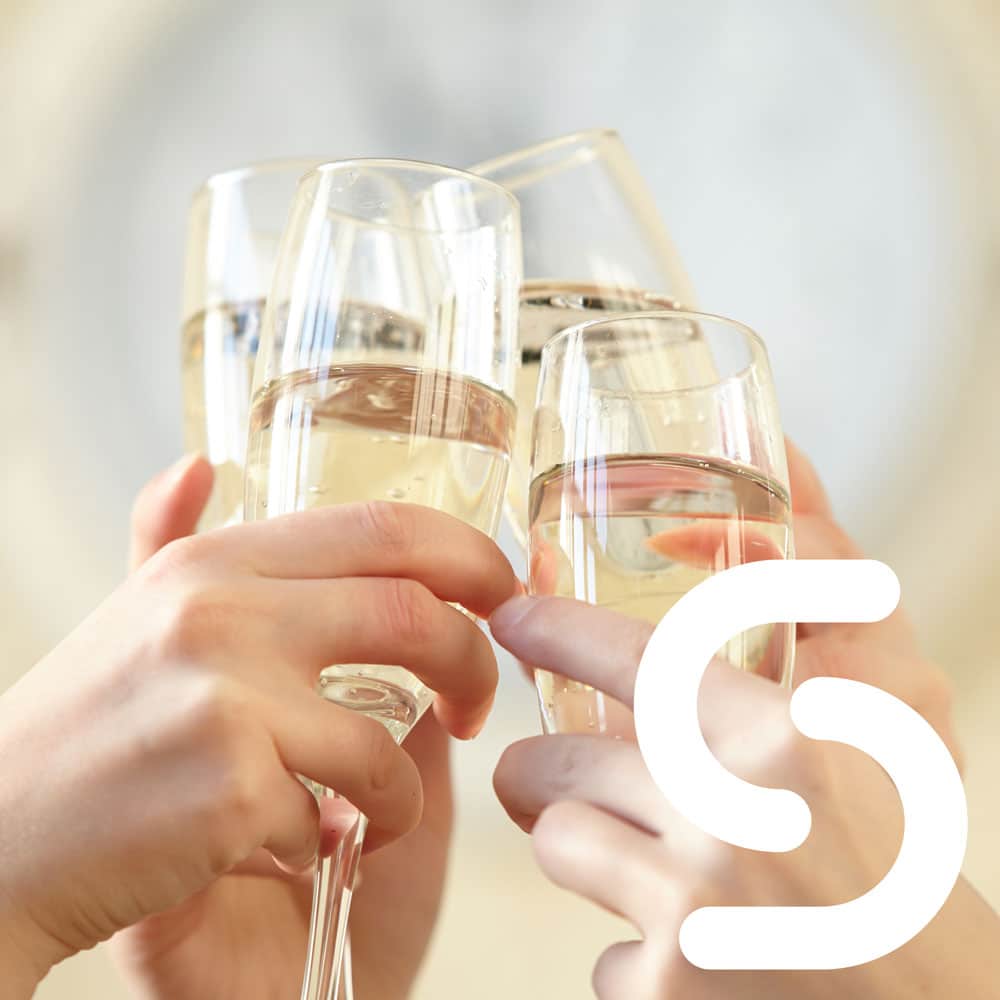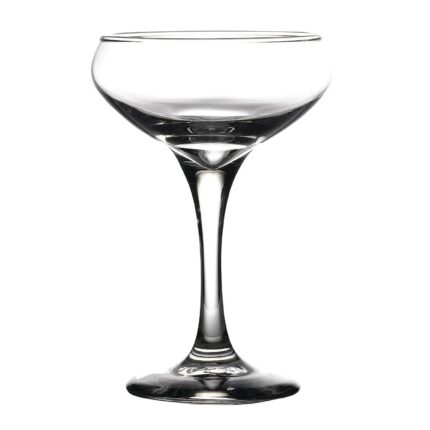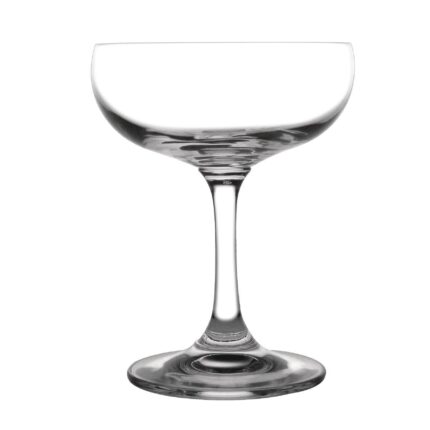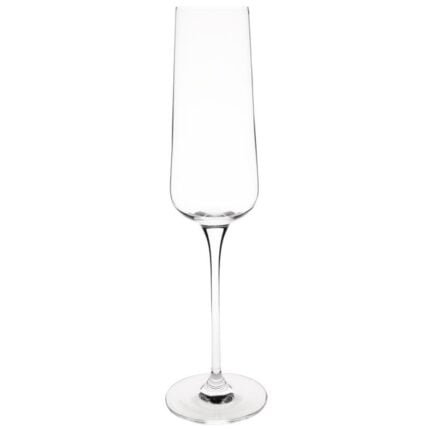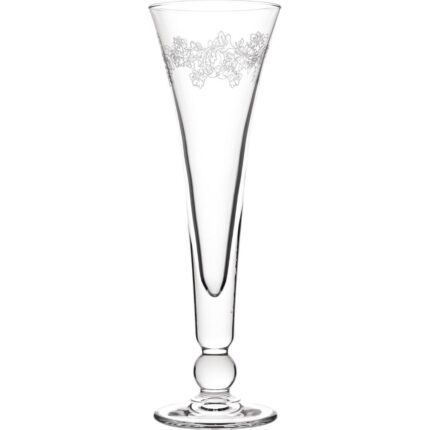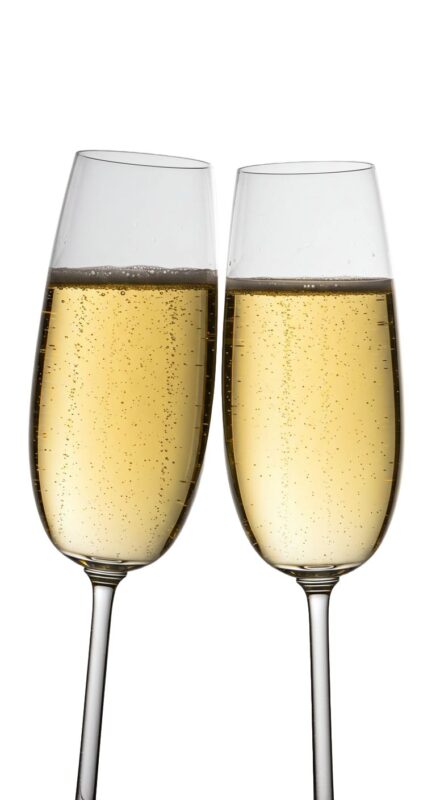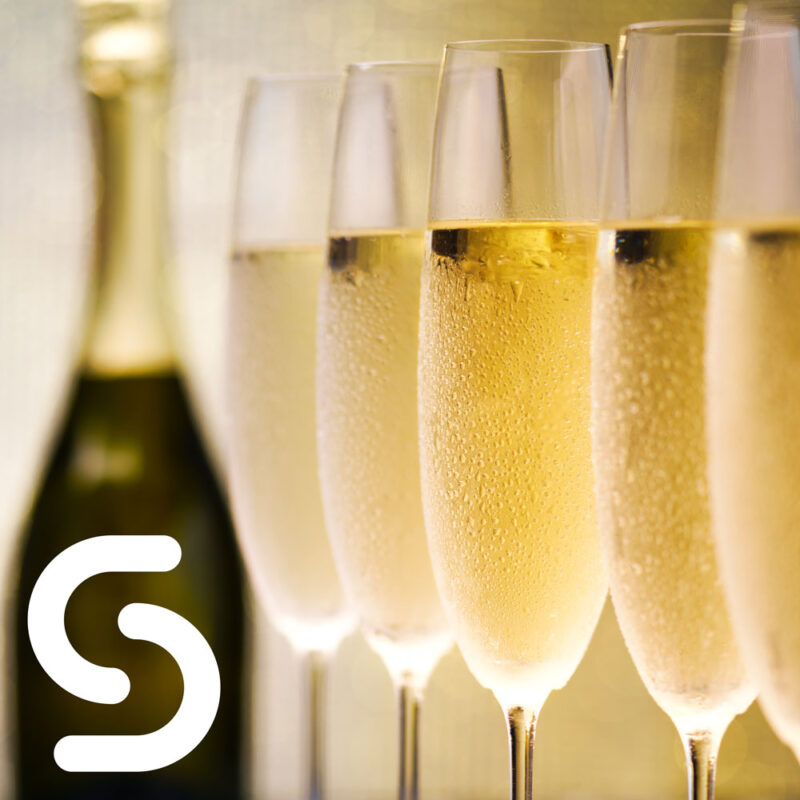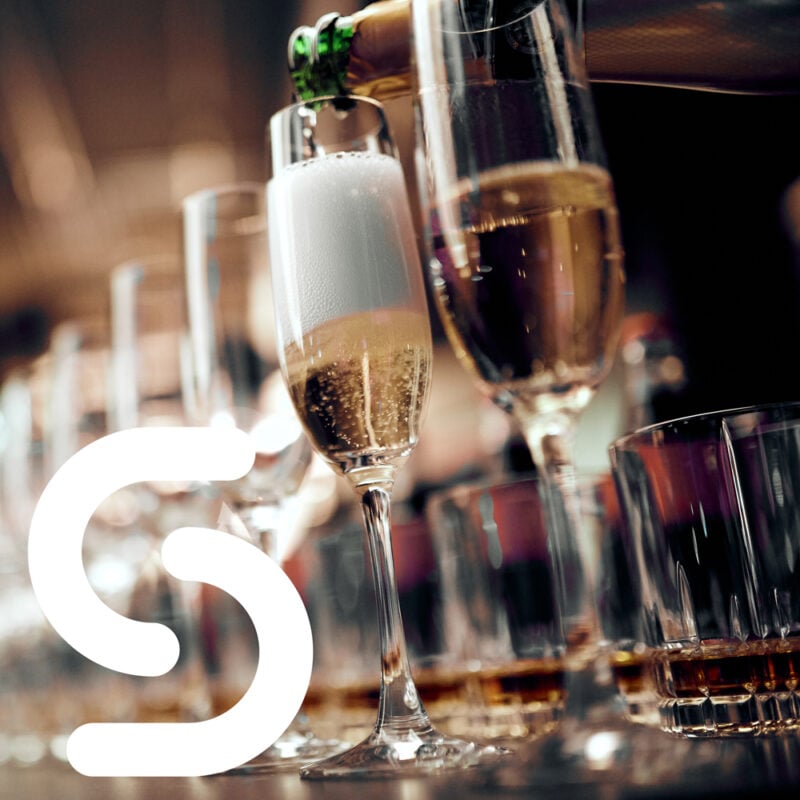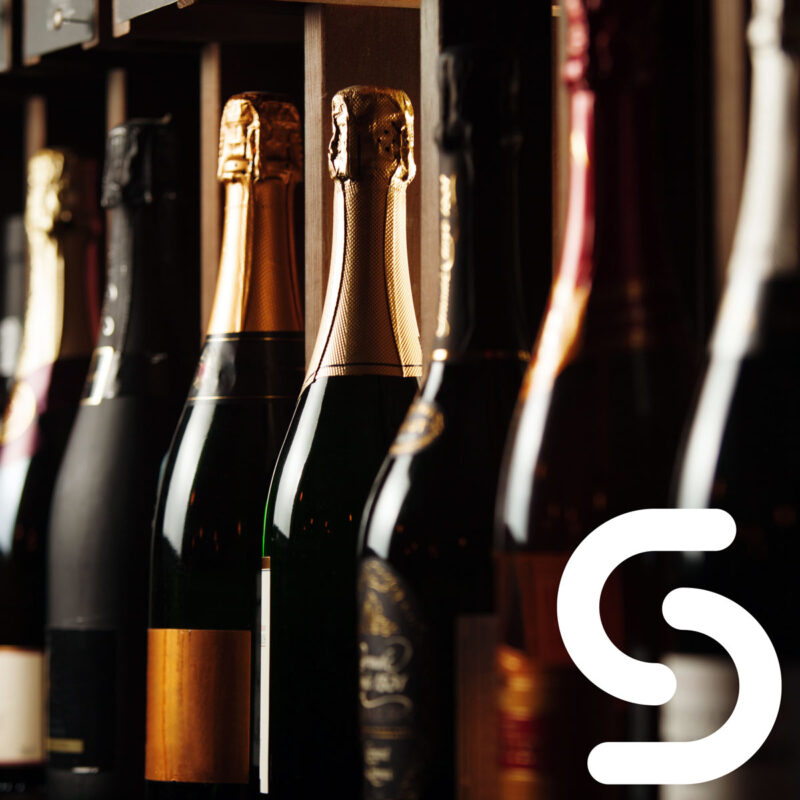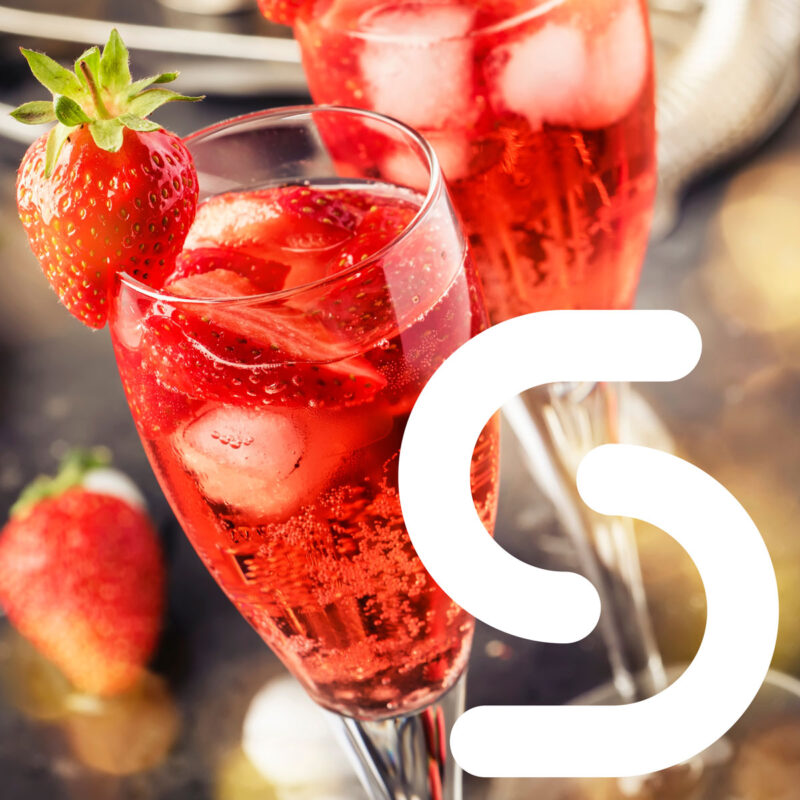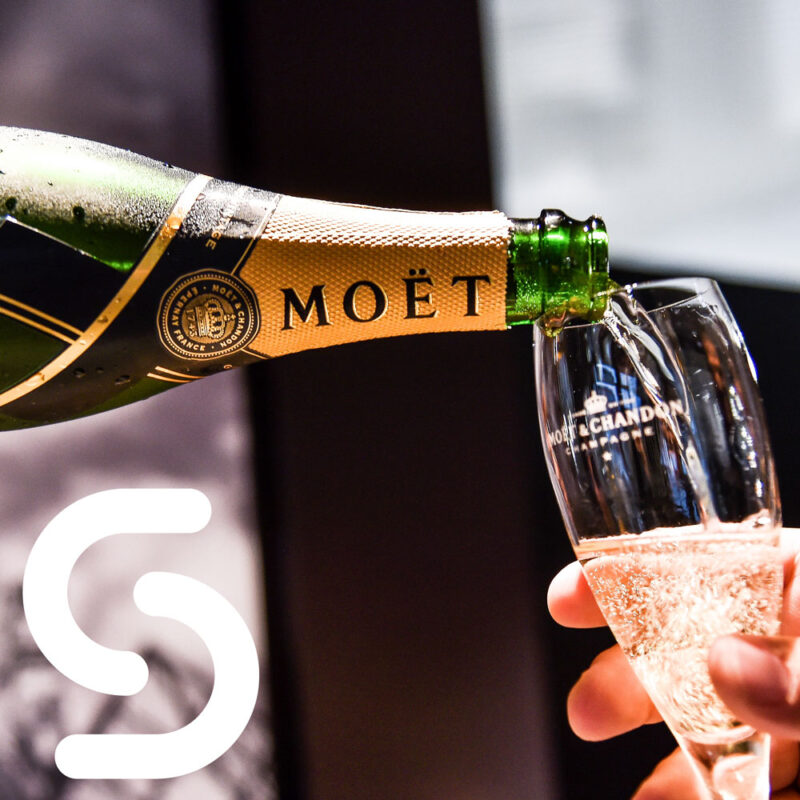Champagne, the sparkling wine that has become synonymous with celebration and luxury, is often enjoyed in a particular type of glassware. But have you ever wondered about the history and evolution of champagne glassware? We’ve included below a summary of the different types of champagne glasses and discover where they came from, starting at beginning all the way up to today.
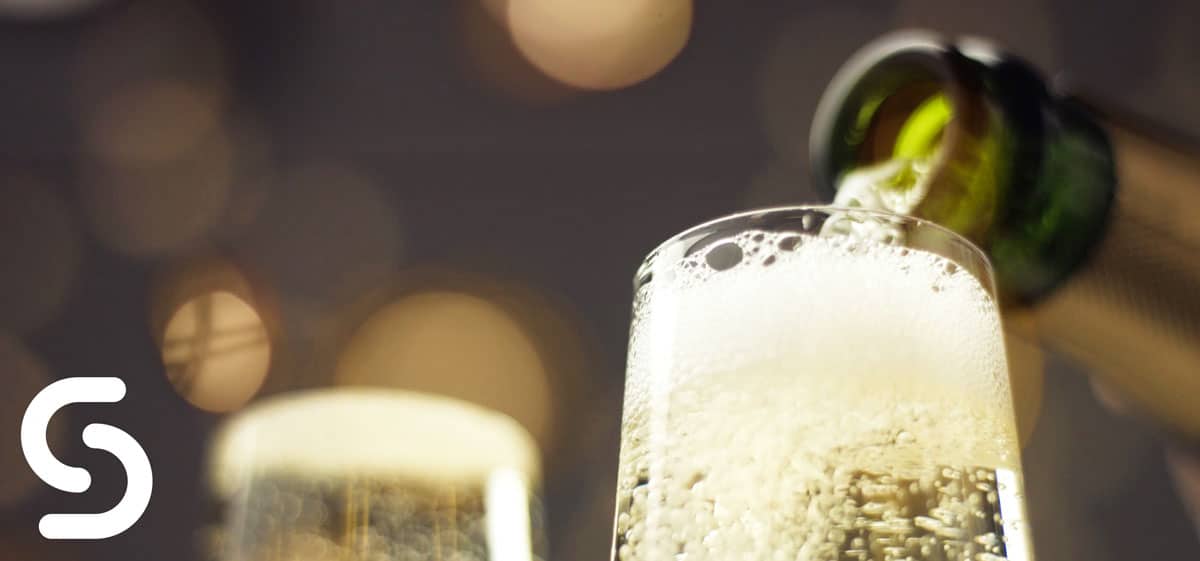
Champagne Glassware – A Brief History
Before we dive into the specific types of champagne glasses, it’s fundamental to understand the historical context in which champagne flutes were developed. Champagne, a sparkling wine produced in the Champagne region of France, has been enjoyed since the 17th century. At the time, champagne was often served in wide and shallow glasses, more similar to modern-day saucers than anything else.
It was in the 18th century that champagne glasses began taking a more distinctive shape. At this time, the production of crystal glassware became more popular, and champagne glasses became more delicate and refined. These early champagne glasses were often tall and narrow, with a stem and base, but they lacked the distinctive shape we associate with modern champagne glasses.
The Classic Design of The Flute
The champagne flute, with its long, narrow bowl and tall stem, is the most recognisable type of champagne glass. The champagne flute first gained popularity in the late 19th century, during the Belle Époque period in France. The Belle Époque was a time of great prosperity and positivity, and the flute’s elegant and refined design perfectly captured the era’s spirit.
Over time, the flute’s design has evolved with variations in the length and shape of champagne flutes and the bowl. However, the primary shape of champagne flutes has remained the same, with a long stem and a narrow, tapered bowl. The flute’s design has many advantages when drinking champagne, including the ability to showcase the wine’s bubbles and concentrate its aromas.
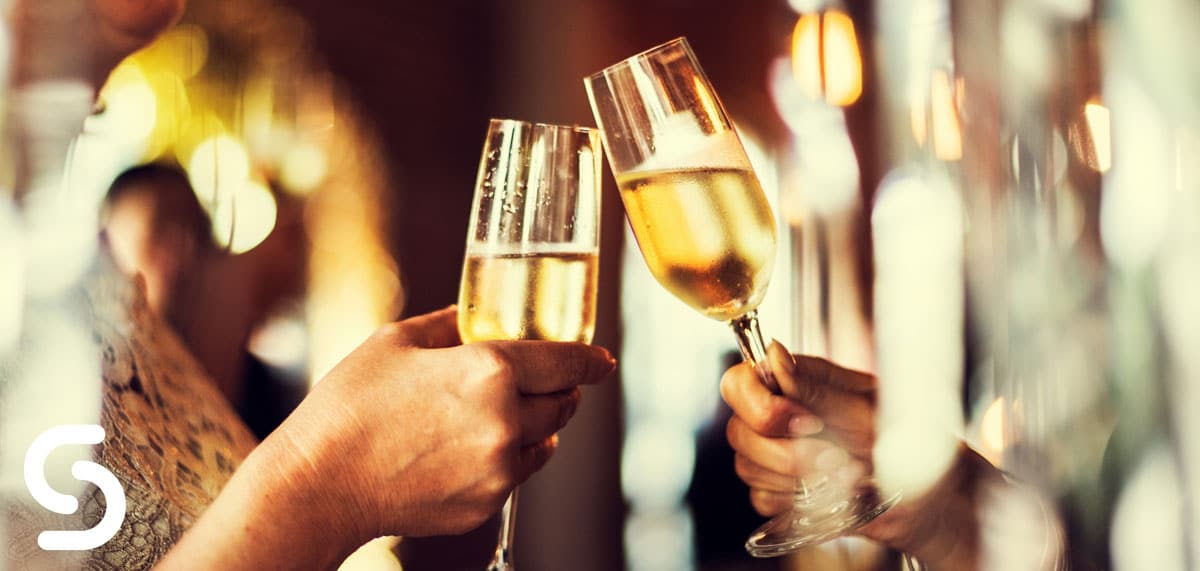
Designed for Royalty & Hollywood – The Coupe
With its shallow, wide bowl and short stem, the champagne coupe has a more storied history than the flute. The coupe was first introduced in the late 18th century, during the reign of Louis XVI of France. It was said to have been modelled after the shape of Marie Antoinette’s breast, although this is likely apocryphal.
The coupe’s popularity waned somewhat in the early 20th century as the flute became the more fashionable choice. However, the coupe enjoyed a resurgence in popularity during the Golden Age of Hollywood, when it became the glass of choice for movie stars and other celebrities. Today, the coupe is often used in vintage or retro-themed events and is still favoured by some for its unique and glamorous appearance.
The Tulip’s Modern Twist
The champagne tulip is a more modern design, first introduced in the 1990s. It features a wide, curved bowl that tapers at the top, with a slightly shorter stem than the flute. The tulip is designed to offer the best of both worlds – the flute’s concentrated aromas and the coupe’s wider bowl.
One advantage of the tulip is that it allows the champagne to breathe more than the flute, which can benefit older or more complex wines. Additionally, the wider bowl allows for a greater surface area for the wine to interact with oxygen, which can help to open up its flavours and add more aromas.
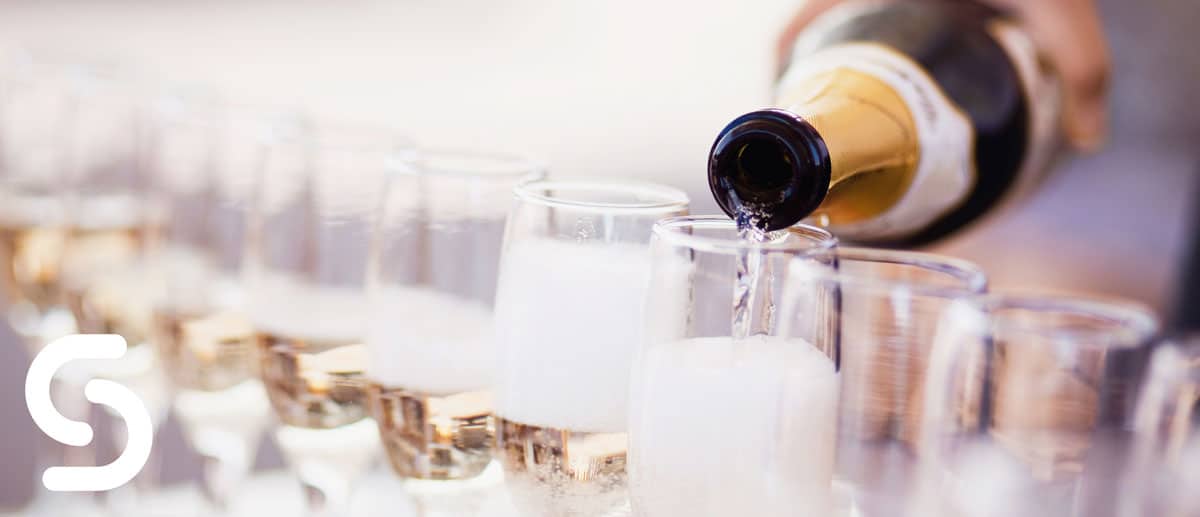
Alternative Options for Champagne Glassware
While the flute, coupe, and tulip flutes are perhaps the most well-known types of champagne glasses, many other designs exist. Some are more traditional, such as the saucer or the goblet, while others are more unconventional, such as the wine glass or a beer mug. The choice of glassware can impact the taste and presentation of the champagne, so it’s worth considering the options available.
For example, a wider bowl may be preferable for champagnes with more complex flavours, as it allows for more aeration and enhances the wine’s bouquet. On the other hand, a narrower bowl may be better for younger champagnes, as it helps to preserve the wine’s bubbles and crispness.
It’s also worth considering the material of the glassware. Crystal glasses are often preferred for champagne or sparkling wines as they are more delicate and enhance the wine’s colour and clarity. However, glass or plastic glasses may be more practical for outdoor events or large gatherings.
How Different Glassware Can Affect Champagne Taste
The choice of glassware can have a range of subtle but significant impacts on the taste and presentation of champagne. For example, the shape of the glass can affect the wine’s aroma as it concentrates or diffuses the scent molecules. The size of the bubbles may also be affected, as a wider bowl can allow for larger bubbles that dissipate more quickly.
The temperature of the wine may also be affected by the choice of glassware. A wider bowl may allow the wine to warm up more quickly, while a narrower bowl may help to maintain a cooler temperature.
Ultimately, choosing champagne glassware is a matter of personal preference, and there is no one “right” or “wrong” way to enjoy champagne. However, understanding the history and evolution of champagne glassware can help us appreciate the different options available and make more informed choices when it comes to serving and enjoying this beloved sparkling wine on special occasions.
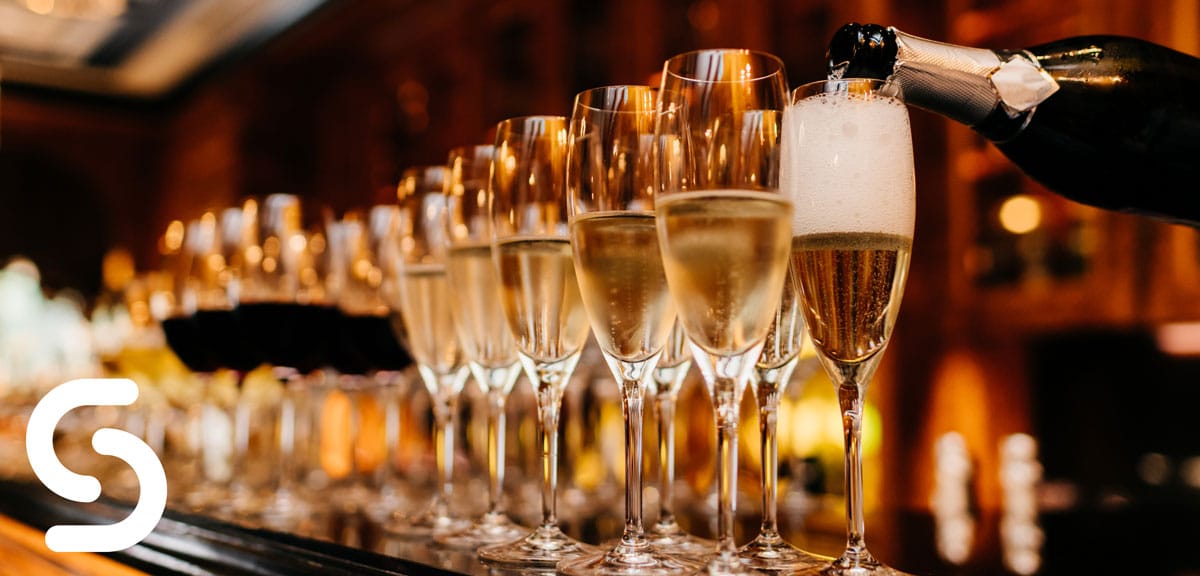
A final thought…
Champagne glassware has a rich and varied history, with different designs evolving over time to suit changing tastes and trends. Flute glasses, coupe, and tulip glasses are perhaps the most well-known types of champagne glasses, but many other options are also available.
The choice of glassware can impact the taste and presentation of champagne, so it’s worth considering the range of different options available. Ultimately, the most important thing is choosing a glassware collection that you enjoy, allowing you to appreciate this sparkling wine’s unique character fully.
Whether you prefer the elegant simplicity of the flute, the glamour of the coupe, or the modern twist of the tulip, there is a champagne glass out there for everyone. So when you next raise a glass of bubbly, take a moment to appreciate the history and evolution of champagne glassware and savour the moment in style.
